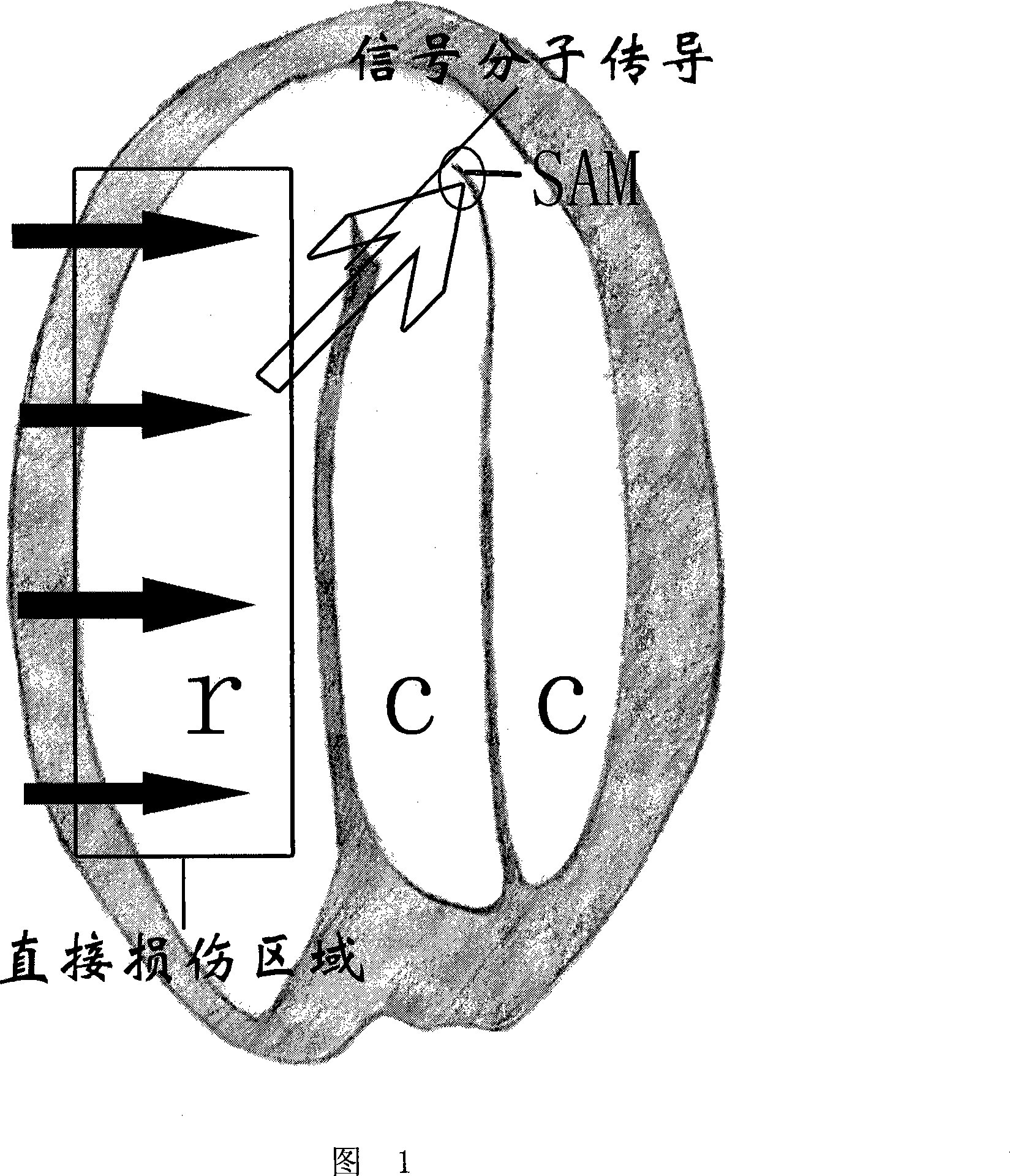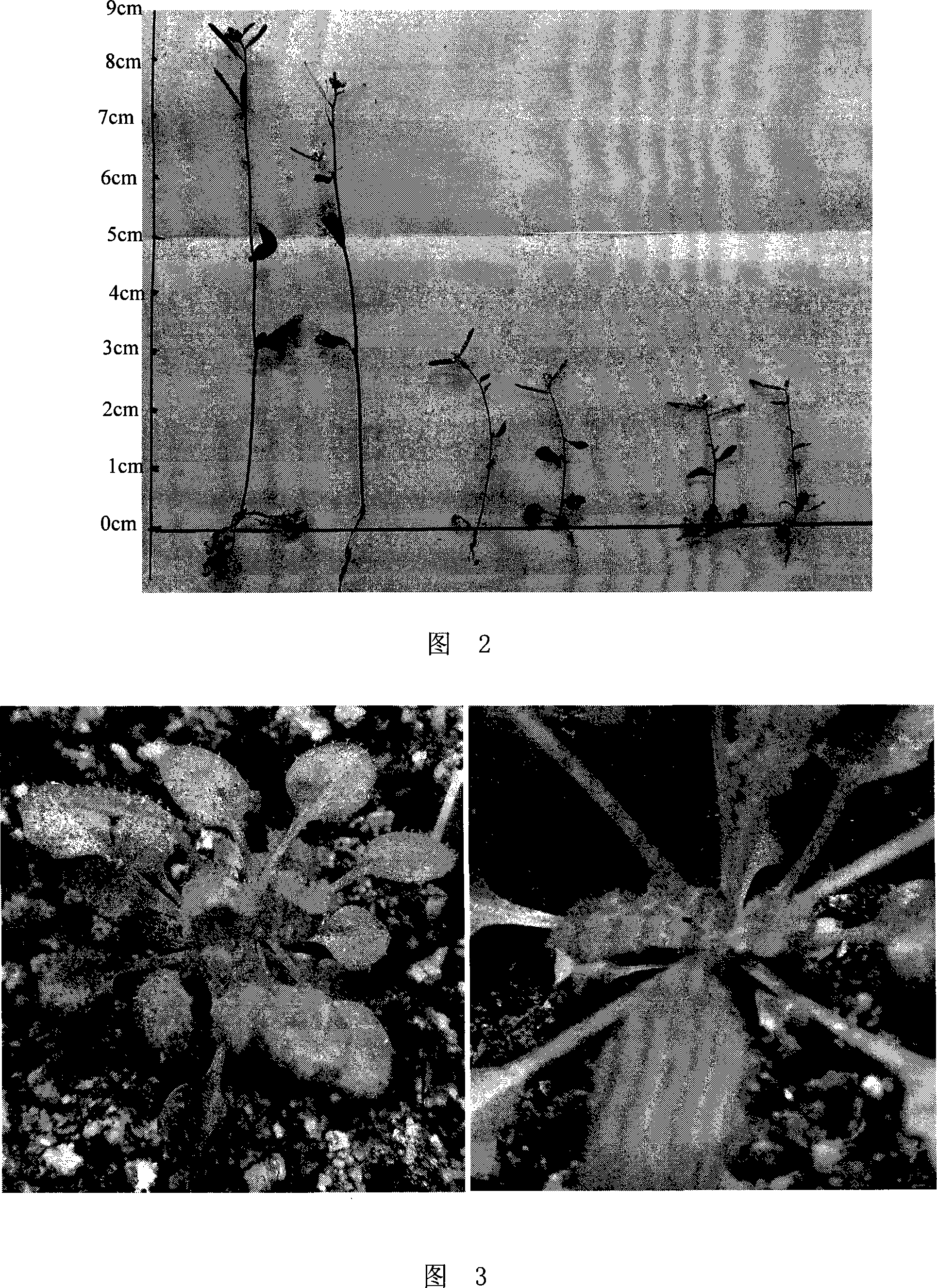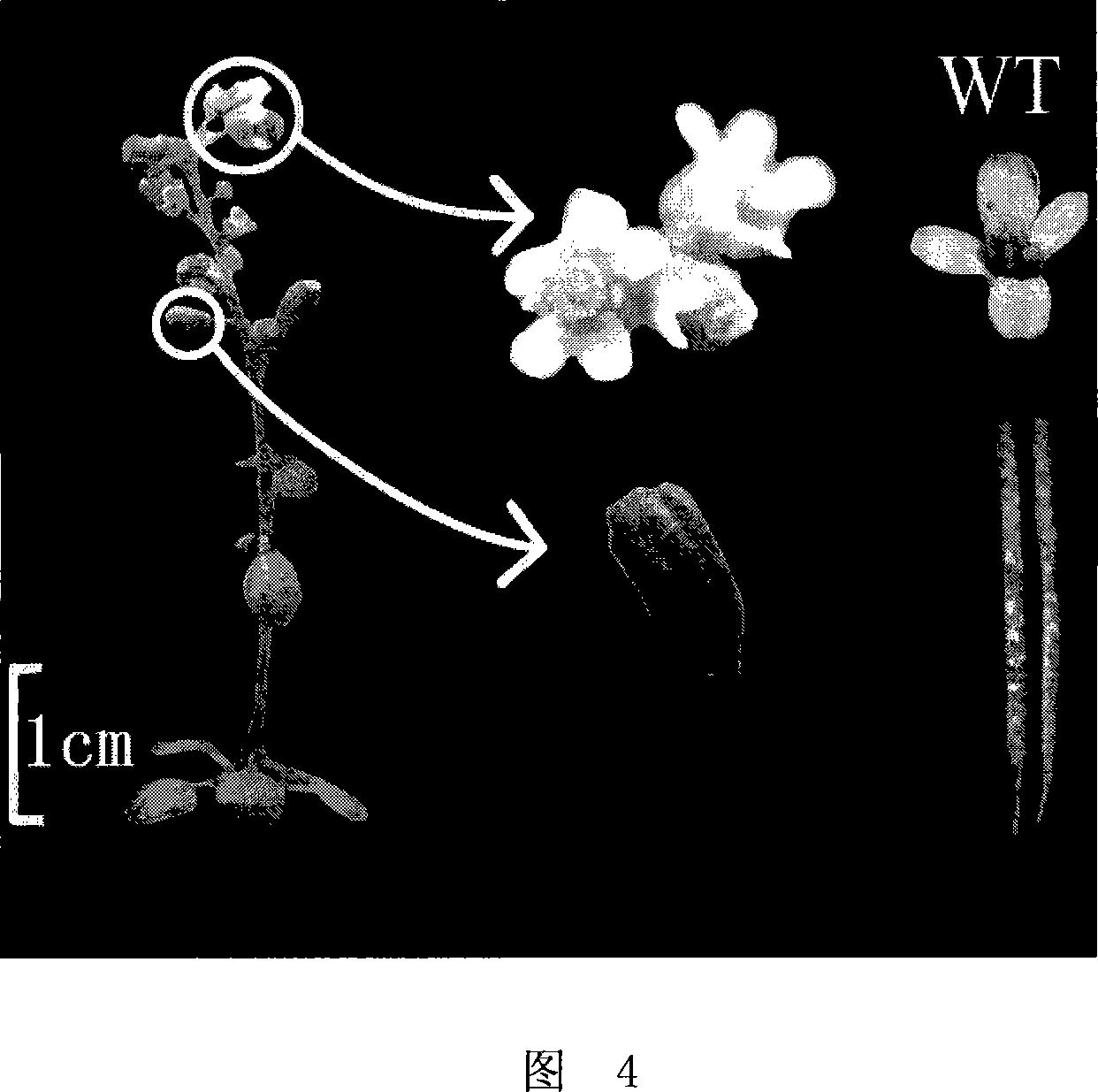Method for plants radioinduction
A plant and plant seed technology, applied in the fields of botany equipment and methods, plant genetic improvement, application, etc., can solve the problems of high seed mortality and low mutation rate, and achieve low seed mortality, high mutation rate, and processing time. short effect
- Summary
- Abstract
- Description
- Claims
- Application Information
AI Technical Summary
Problems solved by technology
Method used
Image
Examples
Embodiment 1
[0025] Example 1, H + Ion Beam Irradiation of Arabidopsis Seeds Produces Mutants
[0026] Select 10,000 Arabidopsis seeds with full grains, no damage, and no pollution
[0027] The selected seeds are naturally adsorbed on wet filter paper and placed on the outer target disk of the accelerator. The accelerator beam is extracted from the vacuum chamber through a 6.5 μm thick titanium membrane.
[0028] Choose H with an energy of 2.0 MeV in vacuum + The ion beam is irradiated, and the energy drops to 1.1MeV when the ions pass through 2mm of air to reach the seed epidermis, and the penetration depth is 30 μm, while the stem apical meristem is 80 μm away from the epidermis. The incident ion fluence range is 1×10 10 ions / cm 2 to 1×10 13 ions / cm 2 .
[0029] The irradiated seeds were planted in the soil, and the growth was observed, and the unirradiated Arabidopsis seeds were used as the control. The results showed that 8832 seeds germinated 14 days after sowing the irradiat...
Embodiment 2
[0030] Example 2, He 2+ Mutants Produced by Ion Beam Irradiation of Tobacco Seeds
[0031] Choose complete, full-bodied tobacco seeds about 1000 grains. Place on wet filter paper for three days at 4°C. Saturate the seeds with water.
[0032] A gap with a width of about one-third of the tobacco seeds is etched on the silicon wafer by a fine processing method, and the seeds are fixed and arranged on the other side of the gap, so that the gap is aligned with the radicle part of the seed, and the stem end meristem It is in the shielding part of the silicon wafer, and then chooses He with an energy of 10.0MeV in vacuum 2+ The ion beam is irradiated from the other side of the silicon wafer. When the ions pass through the 6.5μm Ti film and the air layer of about 3mm and reach the seed skin, the energy drops to 8.5MeV, and the incident ion fluence ranges from 1×10 10 ions / cm 2 to 1×10 13 ions / cm 2 .
[0033] The irradiated seeds were cultured at 23°C, and the unirradiated toba...
PUM
 Login to View More
Login to View More Abstract
Description
Claims
Application Information
 Login to View More
Login to View More - R&D
- Intellectual Property
- Life Sciences
- Materials
- Tech Scout
- Unparalleled Data Quality
- Higher Quality Content
- 60% Fewer Hallucinations
Browse by: Latest US Patents, China's latest patents, Technical Efficacy Thesaurus, Application Domain, Technology Topic, Popular Technical Reports.
© 2025 PatSnap. All rights reserved.Legal|Privacy policy|Modern Slavery Act Transparency Statement|Sitemap|About US| Contact US: help@patsnap.com



